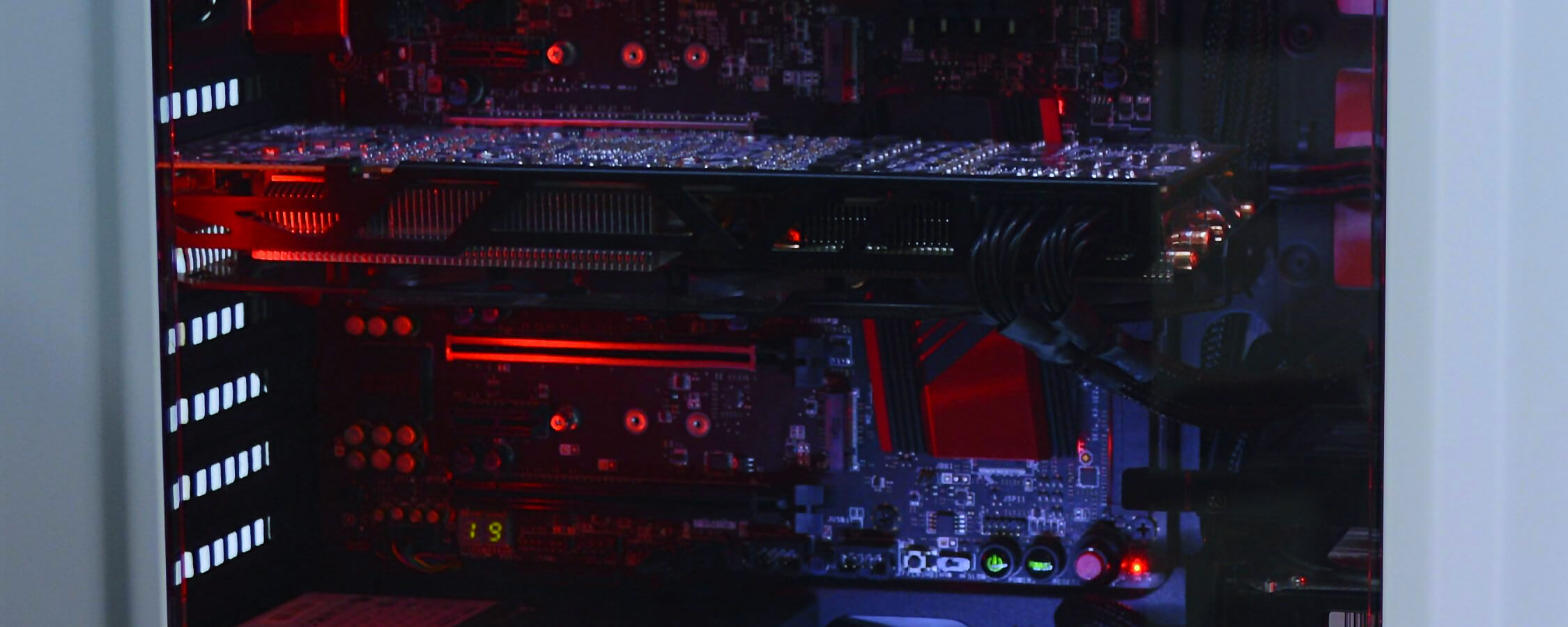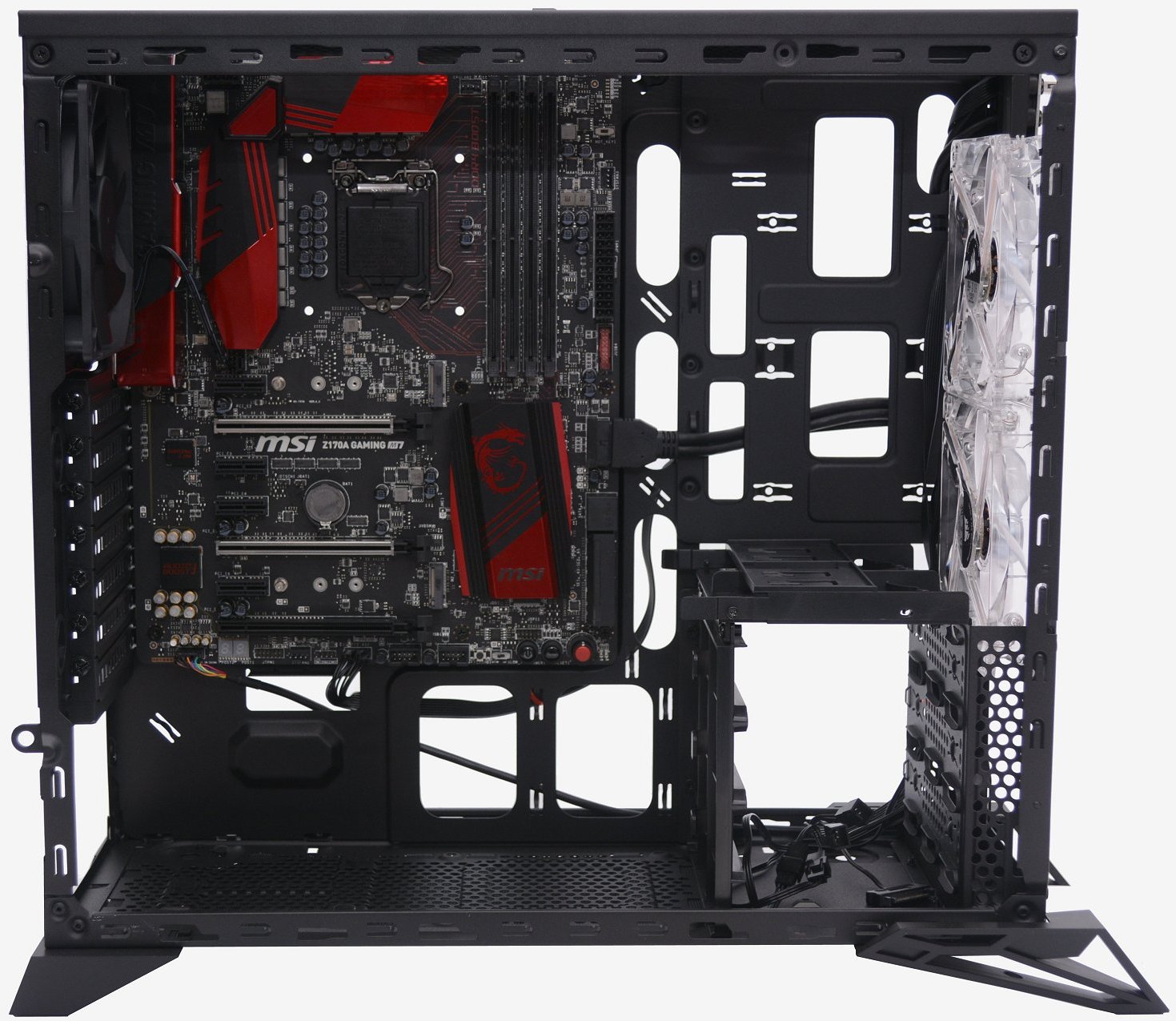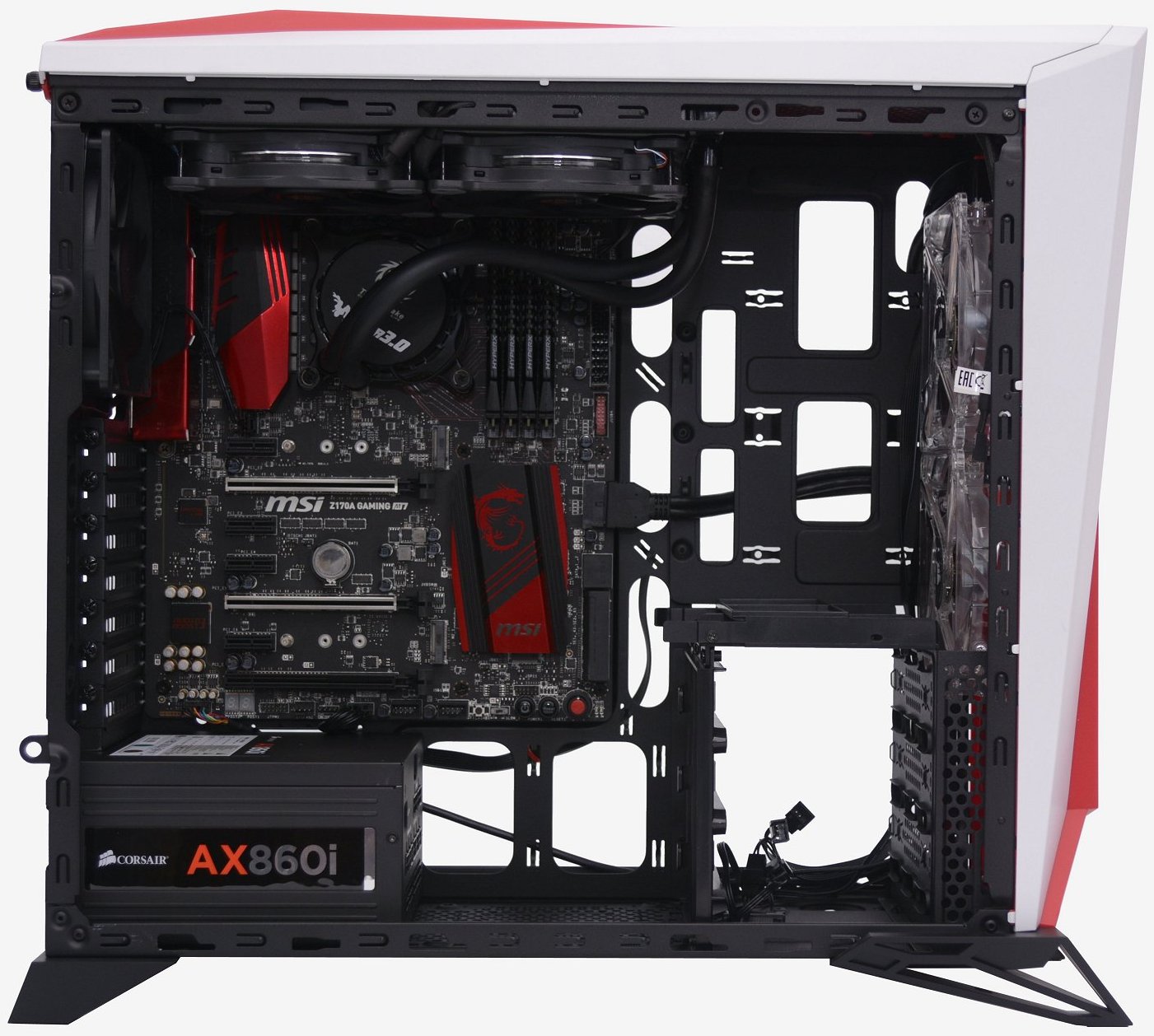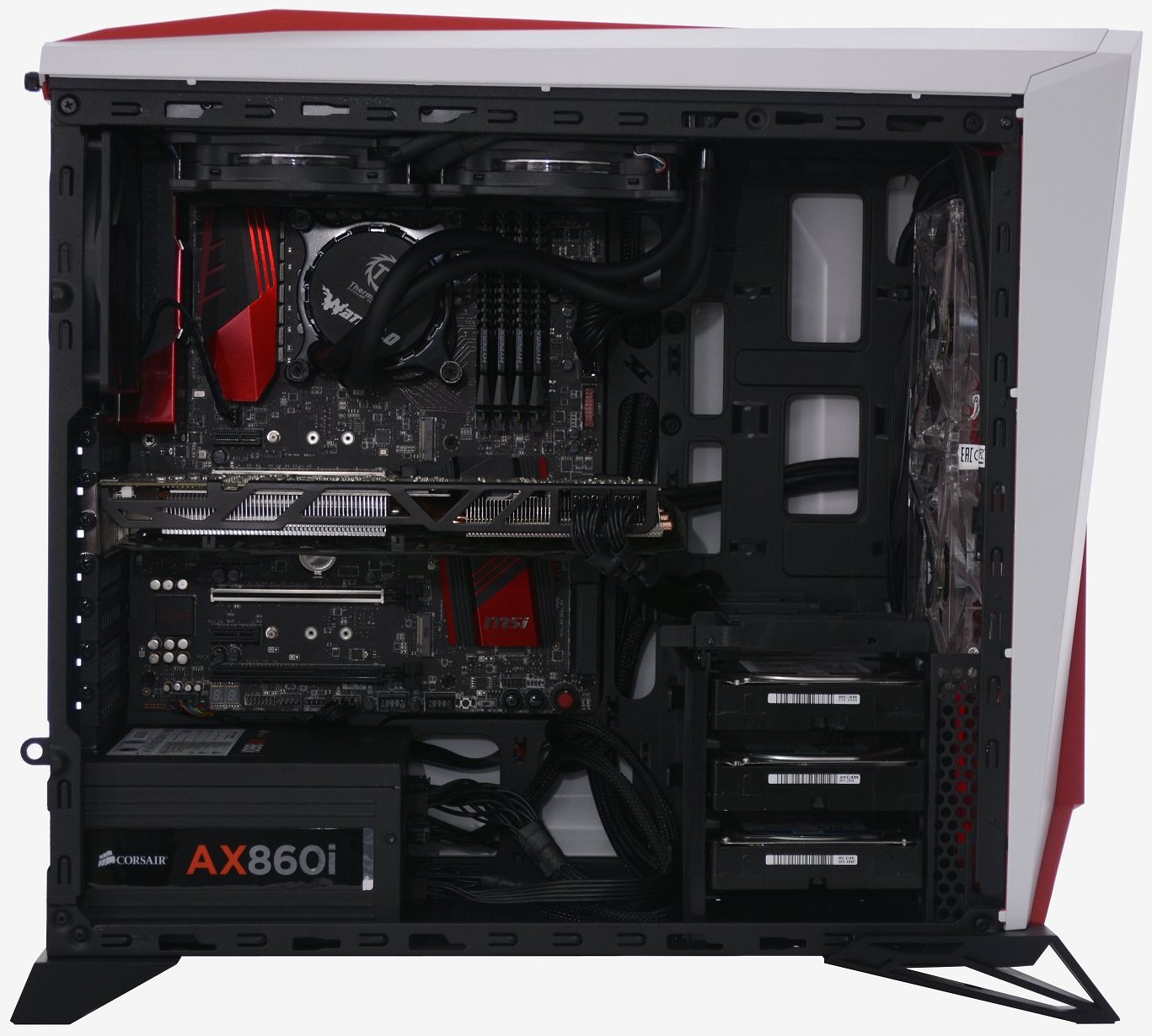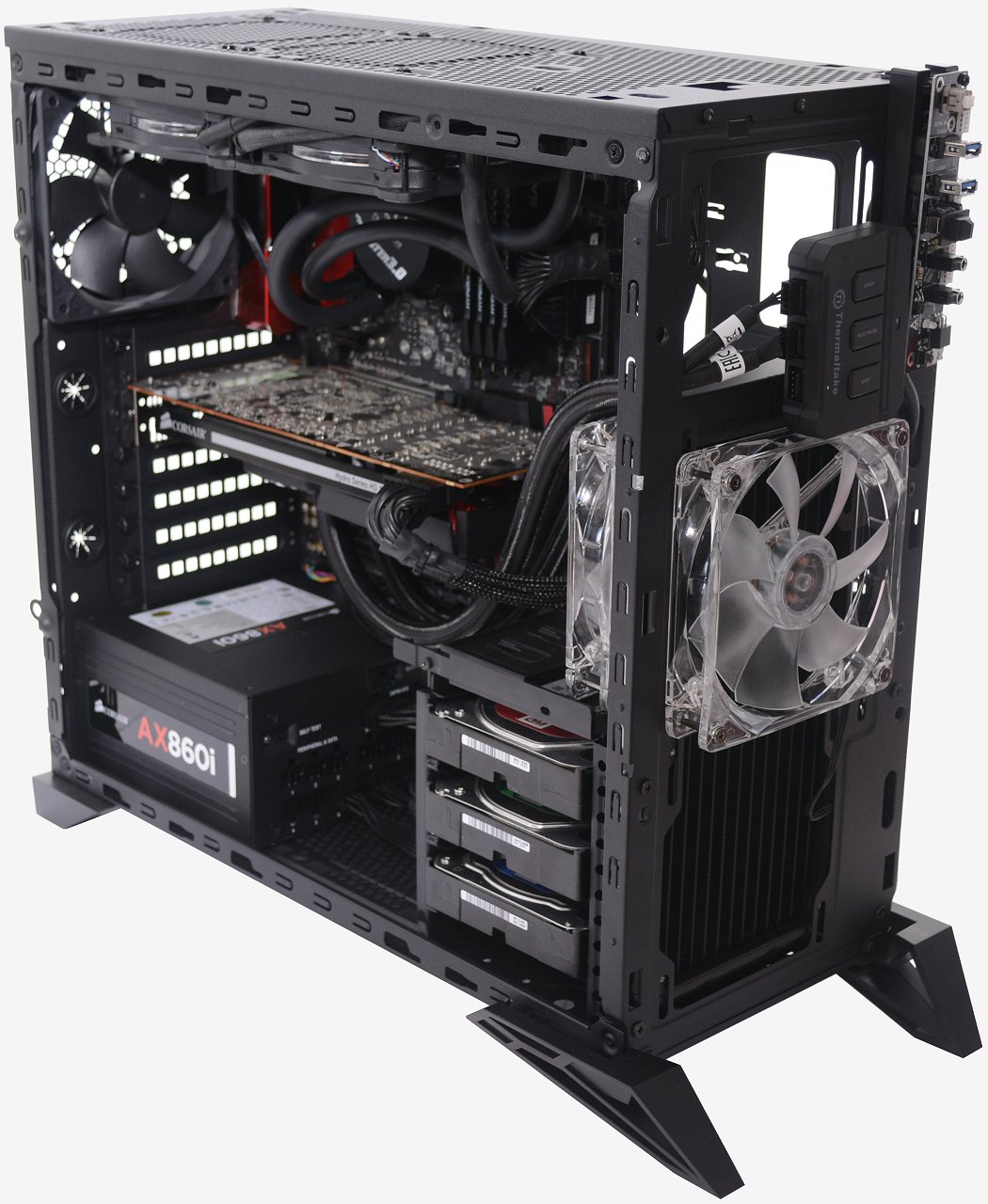Installation
To talk about the installation process and show off the Corsair Spec-Alpha, we have gone with a modern build using the MSI Z170A Gaming M7 motherboard with the Core i7-6700K (cooled by the Thermaltake Water 3.0 Riing RGB 240mm) and 32GB of Kingston HyperX Savage memory. The Corsair AX760i Digital ATX power supply has been used to power the system which will also include the Gigabyte Radeon R9 290X and three WD Red Pro 4TB hard drives.
The MSI Z170A Gaming M7 motherboard managed to look right at home in the stripped down Spec-Alpha, and with it installed we went ahead and hooked up all the front panel connectivity.
With just the motherboard installed, we find that there is loads of room around the back to access the CPU socket for installing an aftermarket cooler such as the Water 3.0.
Next, we threw in the Corsair AX760i which is a simple task due to its fully modular design, which we feel is almost a must in a mid-tower case or smaller. The AX760i supports real-time monitoring and control with Corsair Link, which is an awesome feature that allows users to monitor power input and output, efficiency, fan speed, and internal temperature, directly from the Windows based Corsair Link Dashboard software. Installation is simple, the user only needs to connect the power supply to one of the motherboards onboard USB headers using the supplied cable. Once that is done, it is just a matter of installing the Corsair software.
With the power supply installed, we went on to outfit the motherboard with 32GB of Kingston's HyperX Savage memory. Out of interest, we installed the Thermaltake Water 3.0 Riing RGB 240mm in the top of the case and was surprised to find it fit quite well, causing no compatibility issues at all. Granted, it's a tight fit, but having spent so much time working with Mini-ITX and smaller systems lately, I found it acceptable.
Finally, we installed the Gigabyte Radeon R9 290X and WD Red Pro 4TB hard drives, all of which quickly slotted into place without issue.
Another bit of Corsair kit that we got for this review was the Hydro Series HG10 A1, which is a liquid cooling bracket that adapts Corsair's all-in-one closed loop Hydro coolers to a Radeon R9 290 or 290X graphics card. For a while now, I have had an AMD reference R9 290 graphics card on hand that I haven't been using as the card simply runs far too hot with the stock cooler.
Swapping out the crummy reference cooler for the HG10 A1/H100i v2 combo allowed for massive improvements in operating temperature. The card dropped from a load temperature of 95 degrees right down to 57 degrees and was considerably quieter as well.
The only issue here in relation to the Spec-Alpha is that there isn't a convenient place to mount the radiator regardless of size. Not helping here was the fact that the H100i v2 has rather thick cables that aren't very flexible. Still, with a little messing around, we managed to mount the radiator in the front of the case, though only one fan could be installed.
That said, we did manage to fit a second on the outside of the case for a push pull configuration but only half of the 240mm radiator was receiving air flow. Still this didn't seem to matter as the H100i v2 still provided excellent temperatures on the R9 290.
Overall the Corsair Spec-Alpha installation process was very straight forward and there were no hiccups to speak of.
